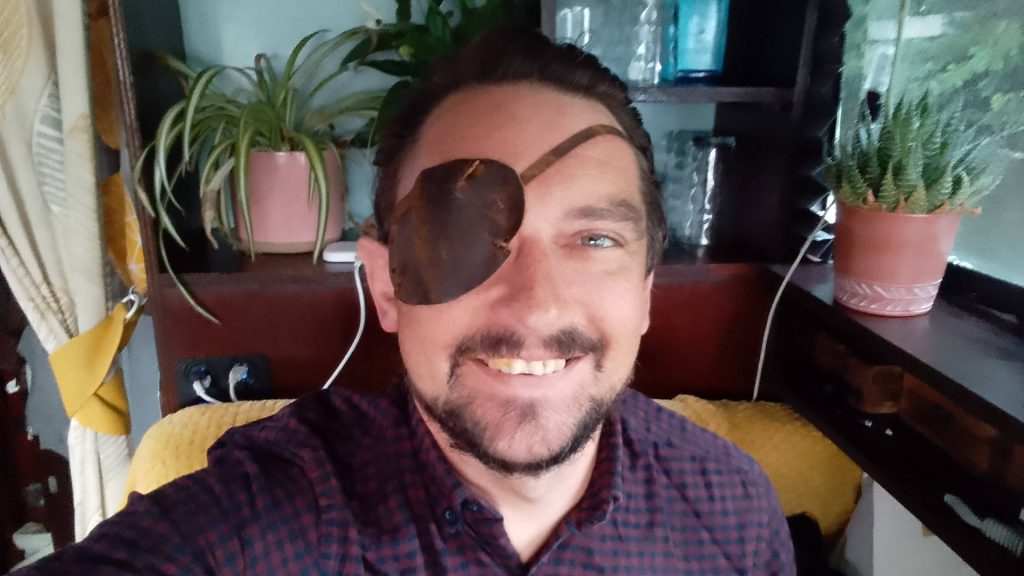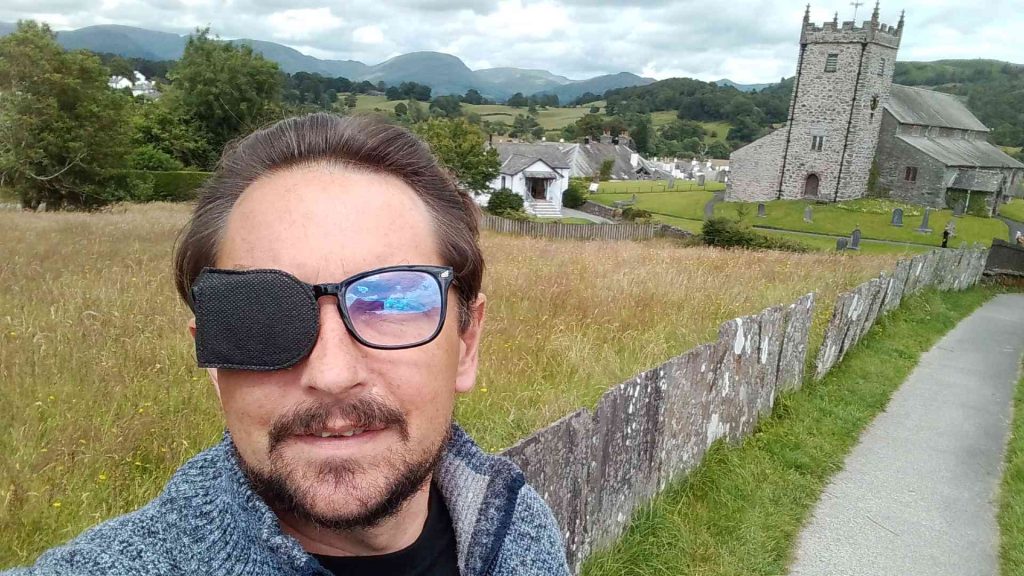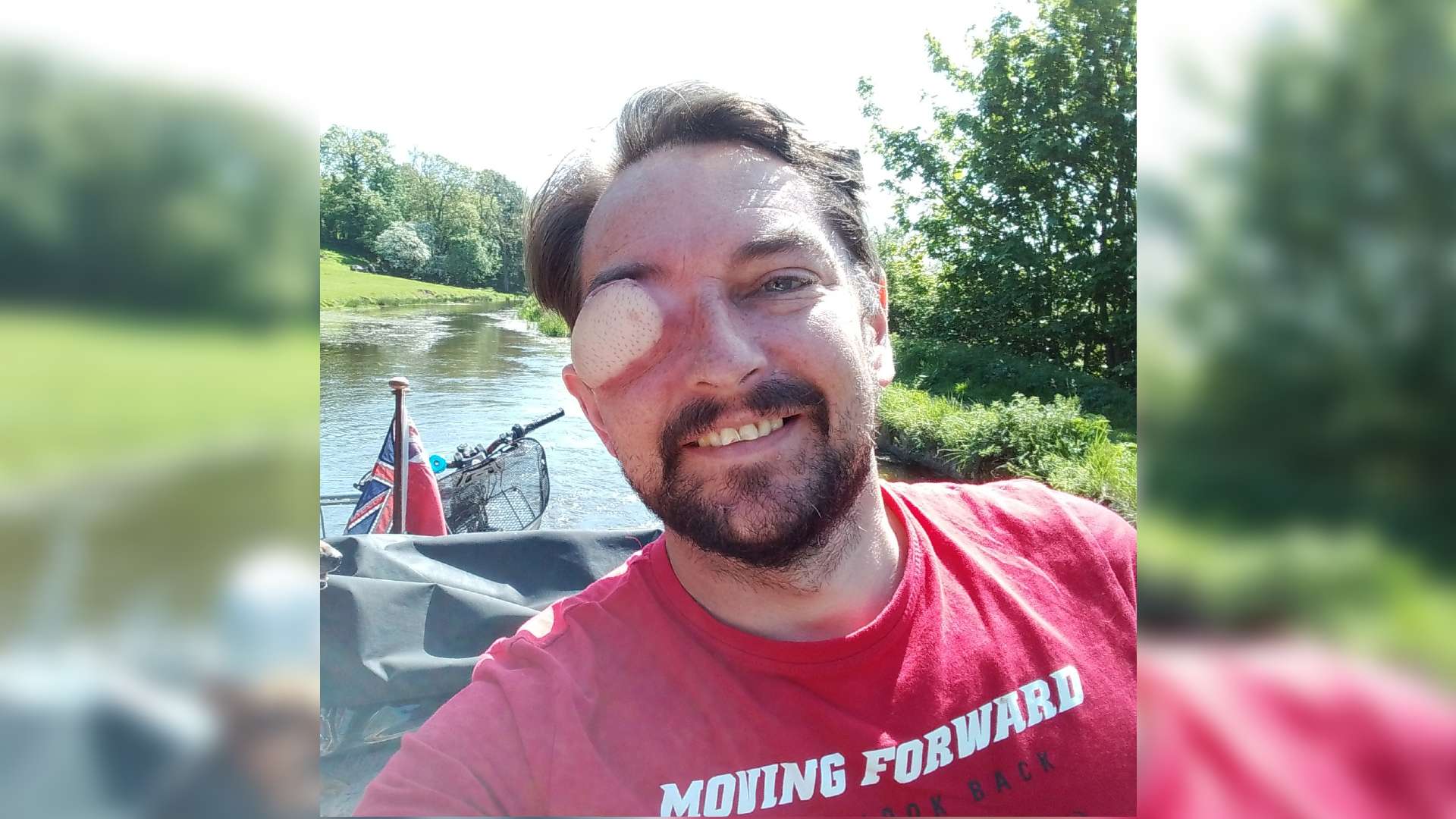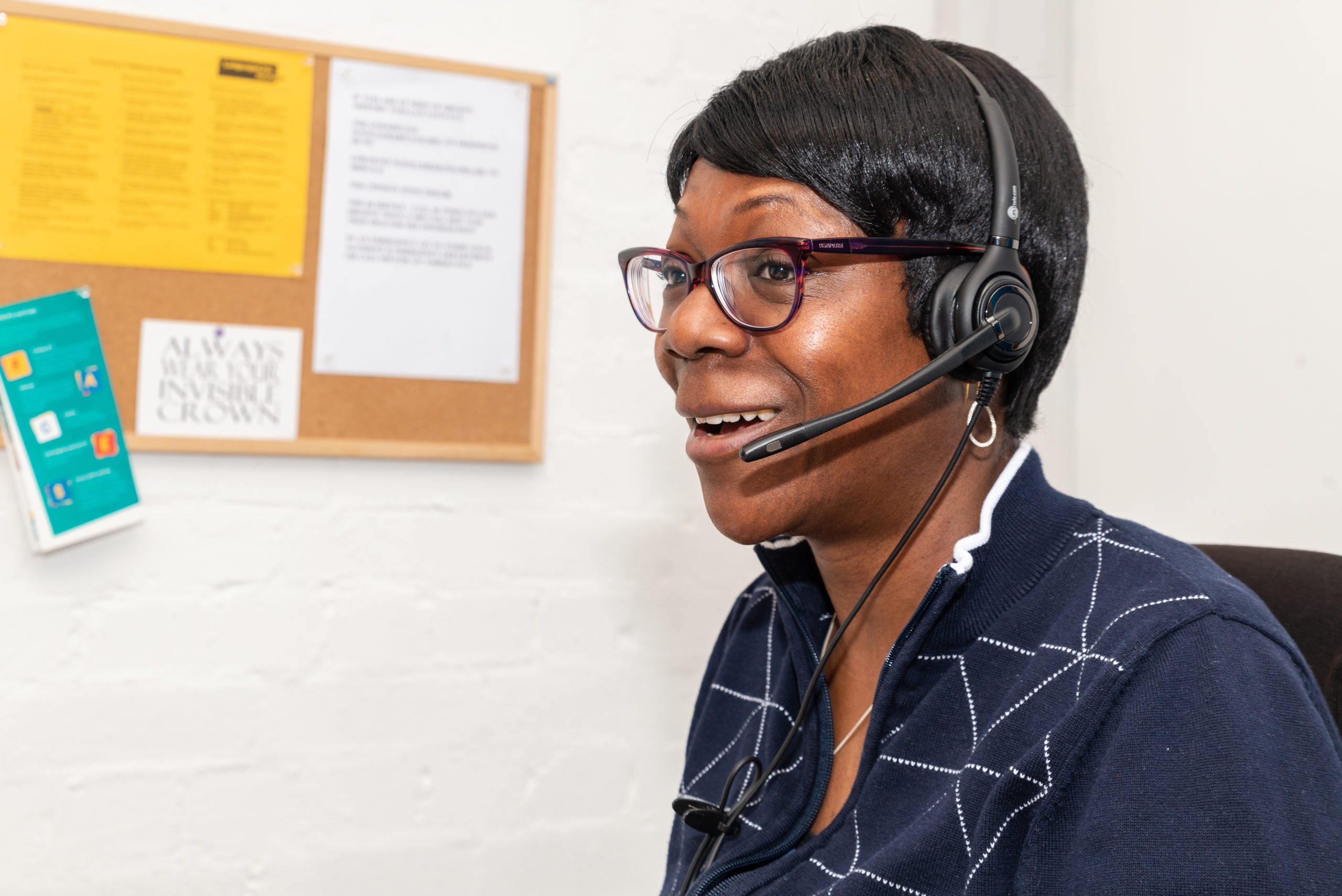In January 2022, I was diagnosed with a malignant tumour, known as a “squamous cell carcinoma” on my lower right eyelid. It rarely attacks this area of the body as aggressively as it did. Within a month, my healthy right eye had to be removed in order to remove the tumour and I was left with a flap of skin, taken from my belly, where my eye used to be.
I was shocked and when I looked in the mirror I didn’t see “me” anymore. I thought my world had ended.
Since my surgery, I have resorted to wearing an eye patch or covering up my eye to avoid being stared at. Being stared at makes me feel anxious and self-conscious and reminds me that I no longer look the same as most people.
My family and friends have learnt to just relax around me and treat me as the same old John they’ve known for a lifetime.
With a newly acquired visible difference, I’ve become more aware of the attitudes that people have towards people who look different. In a short period of time, I’ve experienced cries of “aarrghh” and “pirate” (it doesn’t help that I live on a houseboat).
Mundane, routine tasks like going to the supermarket have become a cause for anxiety, as I’m often asked by a well-meaning cashier “why do you wear an eye patch” and “what happened to you?” Although they come from a place of curiosity, it forces me to relive the trauma of why I look different on a daily basis.
It’s a whole new world for me, dealing with other people’s reactions. I’m still getting used to the second glances and stares. When I wear an eye patch, people are curious as to why I’m wearing one. When I don’t, people can stare just a second too long.
When people stare, I always try to acknowledge them by saying “hi”. It shows that I’ve seen them staring and sometimes it leads to a conversation, other times it ends the stare and makes me feel like I can breathe again.

John in his houseboat
It’s still early days and I’m still struggling with crowded places and generally avoid those where I can. But living on a houseboat can be quite isolating and comes with its own challenges. Fortunately, I’ve found that the wonderful boating community have rallied round me and helped me so much. Even if it’s just stopping by to see me and chatting for a couple of hours about normal stuff, not my condition.
Having family and friends around me has also helped to normalise things and stay grounded. When something like this happens, you just want to be treated normally, like before. It’s reassuring.
But it can also be difficult to have loved ones treat me with sympathy. To catch those little glances of concern or have someone ask you 10 times a day whether you need help with anything can feel overwhelming and exhausting, even if it comes from a good place. My family and friends have learnt to just relax around me and treat me as the same old John they’ve known for a lifetime.
In my case, not only has my appearance changed, but also my vision. I’ve always been fiercely independent, and I like to ask for help on my own terms. Having to rely on others and ask for help has been difficult, but I always try to keep in mind that when help is offered, it’s coming from a place of good intentions.
“How do you eat an elephant?” The simple answer is, of course, one piece at a time. And that was the approach I took.
For me, the last few months have been all about getting back to feeling a bit more comfortable in myself.
Losing part of my vision meant I’ve had to relearn certain things to achieve my new “normality”. To do so, I’ve set small, tangible goals to achieve each week. These included getting back on my bike, cruising my boat, and learning how to judge distances.
Similarly, I’ve set appearance-related goals. One week I would video call a friend with my eye patch on. The next, I would go for a walk in the countryside with my eye patch. I would then progress – I’d video call a friend without my eye patch, go for a walk without an eye patch, and so on, until I felt comfortable with people seeing me as I am now.

John on a walk in the countryside
At the back of my mind has always been an old teacher, who would ask the class “How do you eat an elephant?” The simple answer is, of course, one piece at a time. And that was the approach I took.
I’m now at a place where I can look in a mirror and see me again – the new me, but I still struggle with seeing old photos of me from before. That person doesn’t look like me.
I accept that I’ve only got to know the new version of me over the last six months and there’s still a lot of work to do. But my face is still a part of me, whether that’s with a few more wrinkles or a receding hairline! The same applies to my visible difference. I’m still me, but it just so happens that I only have one eye and look a bit different to how I did.
I haven’t got my future “all figured out”, but then again, I didn’t really have it figured out before. Now I’m on a new path and I hope that I can embrace it and use my experience to help others.
I hope my new normal feels like the old normal, eventually. Comfortable and familiar. I guess time will tell.

